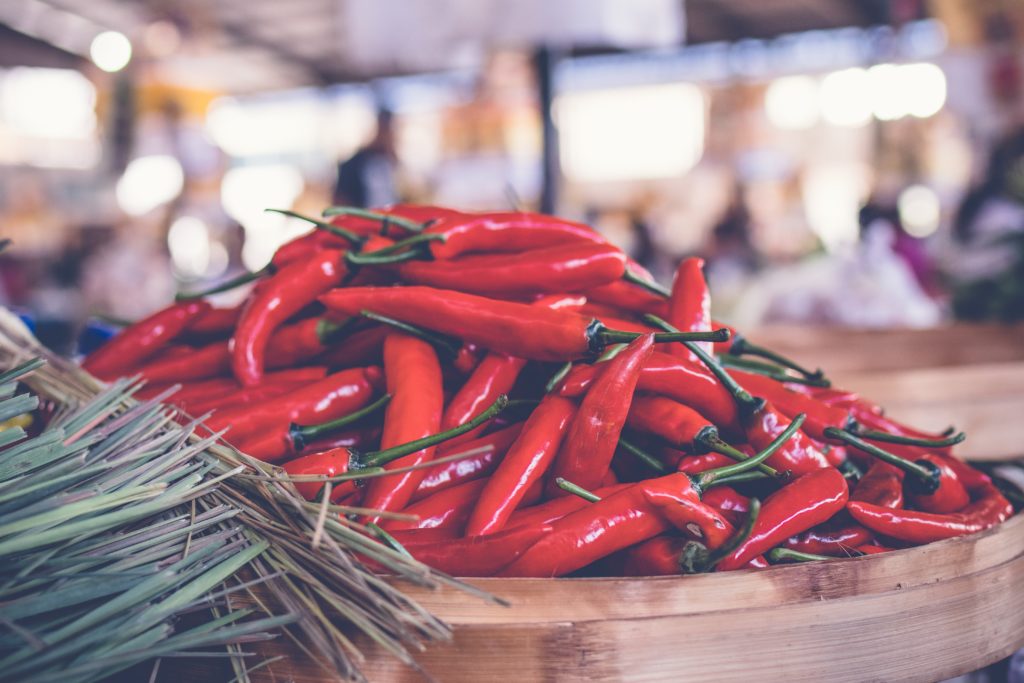Want to get high? Try hot sauce.

Chili peppers. Photo via Pexels
Ed Currie has been clean for many years. As a recovering addict, he can no longer indulge in drugs or alcohol, but he can turn to a different substance to get his fix: hot sauce.
“I’m high as a kite,” the owner of Puckerbutt Pepper Company and cultivator of the world’s hottest peppers announced to an audience at the Brooklyn Historical Society on Thursday.
The source of Currie’s euphoria was a few drops of concentrated chili oil from some of the spiciest peppers in the world. The liquid inside a small vile was a five-gallon pot of peppers diluted into oil.
